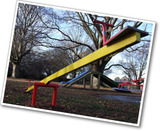
Systems Fun - HS Algebra I
- Subject:
- Mathematics
- Material Type:
- Lesson Plan
- Date Added:
- 07/18/2022

Systems Fun - HS Algebra I

The Story of 2 and x - HS Algebra I

It Depends- Grade 6

Rolling Number Cubes - Grade 6

Standing In Line - Grade 6

Fencing - Grade 7

Washing Cars - Grade 7

Close to Zero - Grade 8

One, No, or Many - Grade 8

Printing Jerseys - Grade 8

Shoe Math - Grade 8

Mathematics explained: Here you find videos on various math topics:
Pre-university Calculus (functions, equations, differentiation and integration)
Vector calculus (preparation for mechanics and dynamics courses)
Differential equations, Calculus
Functions of several variables, Calculus
Linear Algebra
Probability and Statistics


Equations and Inequalities
Type of Unit: Concept
Prior Knowledge
Students should be able to:
Add, subtract, multiply, and divide with whole numbers, fractions, and decimals.
Use the symbols <, >, and =.
Evaluate expressions for specific values of their variables.
Identify when two expressions are equivalent.
Simplify expressions using the distributive property and by combining like terms.
Use ratio and rate reasoning to solve real-world problems.
Order rational numbers.
Represent rational numbers on a number line.
Lesson Flow
In the exploratory lesson, students use a balance scale to find a counterfeit coin that weighs less than the genuine coins. Then continuing with a balance scale, students write mathematical equations and inequalities, identify numbers that are, or are not, solutions to an equation or an inequality, and learn how to use the addition and multiplication properties of equality to solve equations. Students then learn how to use equations to solve word problems, including word problems that can be solved by writing a proportion. Finally, students connect inequalities and their graphs to real-world situations.

Lesson OverviewStudents apply the addition property of equality to solve equations. They are introduced to this property using a balance scale.Key ConceptsUp until this lesson, students have been solving equations informally. They used guess and check and reasoned about the quantities on either side of the equation in order to solve the equation.In this lesson, students are introduced to the addition property of equality. As equations become more and more complicated, students will need to rely on formal methods for solving them. This property states that the same quantity can be added to both sides of an equation and the new equation will be equivalent to the original equation. That means the new equation will have the same solutions as the original equation.To solve an equation such as x + 6 = 15, –6 can be added to both sides to get the resulting equation x = 9. However, since adding a negative number has not been introduced yet, students will consider both adding and subtracting a number (which is the equivalent of adding a negative number) from both sides to be an application of the addition property of equality.Students will apply the addition property of equality to an equation with the goal of getting the variable alone on one side of the equation and a number on the other.Goals and Learning ObjectivesUse the addition property of equality to keep a scale balanced.Use the addition property of equality to solve equations of the form x + p = q for cases in which p, q, and x are all non-negative rational numbers.

Lesson OverviewStudents apply the multiplication property of equality to solve equations.Key ConceptsIn the previous lesson, students solved equations of the form x + p = q using the addition property of equality. In this lesson, they will solve equations of the form px = q using the multiplication property of equality. They will multiply or divide both sides of an equation by the same number to obtain an equivalent equation.Since multiplication by a is equivalent to division by 1a, students will see that they may also divide both sides of the equation by the same number to get an equivalent equation. Students will also apply this property to solving a particular kind of equation, a proportion.Goals and Learning ObjectivesUse the multiplication property of equality to keep an equation balanced.Use the multiplication property of equality to solve equations of the form px = q for cases in which p, q, and x are all non-negative rational numbers.Use the multiplication property of equality to solve proportions.

Gallery OverviewAllow students who have a clear understanding of the content thus far in the unit to work on Gallery problems of their choosing. You can then use this time to provide additional help to students who need review of the unit's concepts or to assist students who may have fallen behind on work.Gallery DescriptionsKeep It BalancedStudents will use reasoning to complete some equations to make them true.Equation SortStudents will sort equations into three groups: equations with one solution, equations with many solutions, and equations with no solutionsOn the Number LineStudents will use a number line to identify numbers that make an equation or inequality true.How Many Colors?Students will write and solve an equation to find the number of different colored blocks in a box.Value of sStudents will use a property of equality to solve an equation with large numbers.Marbles in a CupStudents are given information about the weight of a cup with two different amounts of marbles in it. They use this information to find the weight of the cup.When Is It True?Students will use what they know about 0 and 1 to decide when a certain equation is true.

Lesson OverviewStudents practice solving equations using either the addition or the multiplication property of equality.Key ConceptsStudents will solve equations of the form x + p = q using the addition property of equality.They will solve equations of the form px = q using the multiplication property of equality.They will need to look at the variable and decide what operation must be performed on both sides of the equation in order to isolate the variable on one side of the equation.If a number has been added to the variable, they will subtract that number from both sides of the equation. If a number has been subtracted from the variable, they will add that number to both sides of the equation. If the variable has been multiplied by a number, students will either divide both sides of the equation by that number or multiply by the reciprocal of that number. If the variable has been divided by a number, students will multiply by that number. Students will see how this can be applied to solving a proportion such as xc=ab.Goals and Learning ObjectivesPractice solving equations using either the addition or the multiplication property of equality.Distinguish between equations that can be solved using the addition property of equality from equations that can be solved using the multiplication property of equality.Solve a proportion by solving an equation.

Lesson OverviewStudents use reasoning to identify solutions to equations. They initially do this using the balance scale. They also learn that some equations may have all numbers as solutions and some equations may have no solutions.Key ConceptsBefore beginning the formal process of solving equations, students need opportunities to use reasoning to find solutions. Students study examples where reasoning pays off. For example, in the equation 4b + 15 = 3b + 6b, students can reason that 4b + 15 = 3b + 6b, so 5b must be equal to 15, an equation which they can solve by understanding multiplication.Students also discover that there are equations that can have every number as a solution or no number as a solution. They may recognize some equations with all numbers as solutions by recognizing that they show a property of operations, such as the commutative property of addition.SWD: Students with disabilities may struggle to determine salient information in lessons. Preview the goals with students to support saliency determination as they move through the instruction and tasks.Students with disabilities may struggle to self-monitor their progress through the lesson. Provide students with a copy of the lesson goals to use as a checklist as they move through the different tasks. Have students indicate when they have reached each goal for the lesson. This will also promote engagement, independence, and self-management of learning.Goals and Learning ObjectivesUse reasoning to identify the solution to an equation.Recognize equations that have any number as a solution and equations that have no solutions.

Students work in pairs to critique and improve their work on the Self Check from the previous lesson.Key ConceptsTo critique and improve the task from the Self Check and to complete a similar task with a partner, students use what they know about solving equations and relating the equations to real-world situations.Goals and Learning ObjectivesSolve equations using the addition or multiplication property of equality.Write word problems that match algebraic equations.Write equations to represent a mathematical situation.